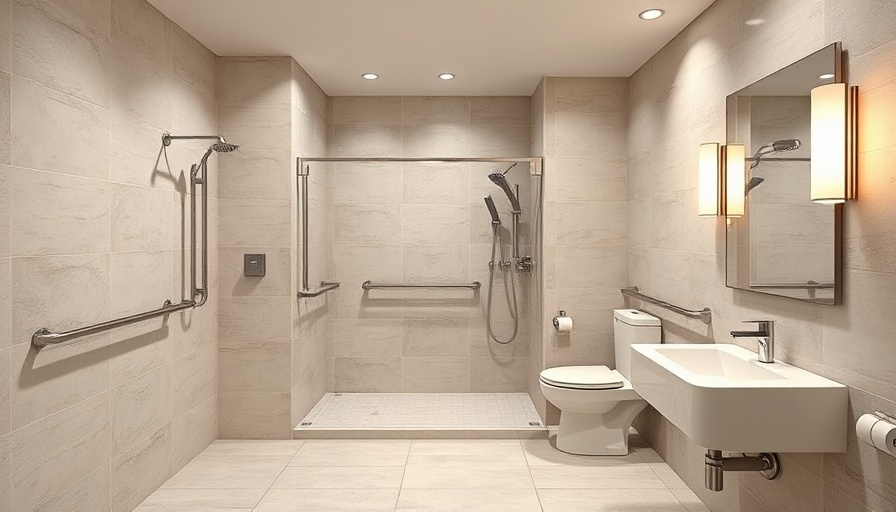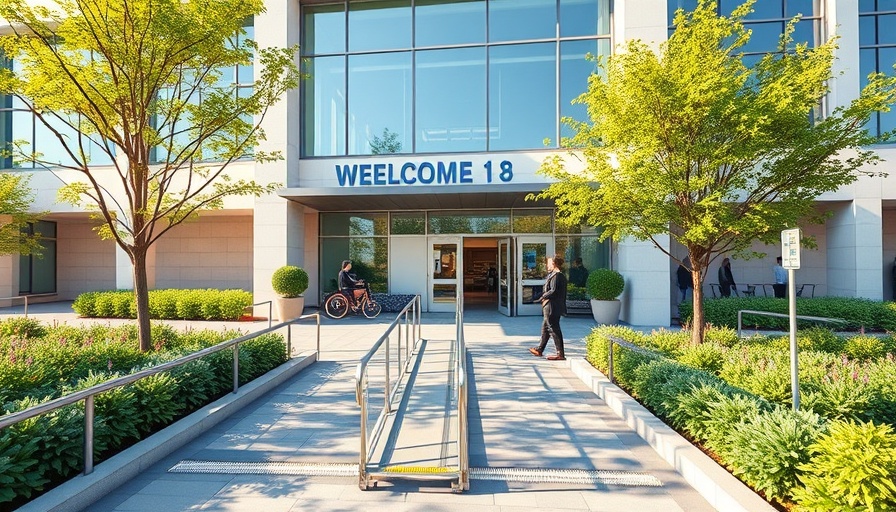
Understanding the Importance of ADA Compliance
As we navigate through life, encountering various challenges is a part of the journey. One of the most significant challenges can be with accessibility. This is where the Americans with Disabilities Act (ADA) comes in, offering protections and guidelines that empower individuals with disabilities to ensure their right to access—and enjoy—public spaces. But what does it mean for your home, particularly in Toms River? Understanding ADA compliance isn’t just about law; it’s about enhancing functionality for everyone who enters your space.
The Foundations of ADA Regulations
Enacted in 1990, the ADA sets the tone for accessibility across the United States. At its core, the act aims to eliminate barriers and ensure every public and private space is welcoming to individuals with disabilities. This means when considering modifications in your home, particularly in areas such as bathrooms, you must keep certain design principles at the forefront. These include grab bars, appropriate sink heights, and adequate maneuvering space for those using mobility devices.
Defining 'Accessible' for Your Toms River Home
Many homeowners in Toms River grapple with the term “accessible.” According to the ADA, accessibility refers to designs that accommodate individuals with diverse physical abilities. If you’re a homeowner planning a bathroom remodel, several key features can make significant differences: wider doors, clear floor space of 30 inches by 48 inches for wheelchair maneuverability, and fixtures installed at accessible heights. Understanding these requirements can help ensure you create a truly accessible bathroom, essential not only for visitors with disabilities but also for family members who may face mobility challenges.
Local Building Codes and Compliance Regulations
While national standards are essential to understand, local codes in Toms River and its surrounding areas may have additional requirements. Engaging with local authorities for clarity on these regulations can help navigate compliance without inadvertently breaking any laws. This proactive approach not only protects you but also enhances your home’s appeal by showcasing your commitment to accessibility. Remember that each modification can potentially increase your home's value, especially as homebuyers increasingly prioritize accessibility features.
Key Components of a Thoughtful Bathroom Design
Merely adhering to ADA standards is often not enough; personal comfort and usability are paramount when designing an accessible bathroom. Key components should include strategically placed grab bars, accessible toilets, and roll-in showers. For instance, grab bars should be installed near toilets and in showers to enhance safety. These thoughtful installations can significantly improve the daily experience for users, providing much-needed support when navigating the space.
Incorporating Style and Functionality
Accessibility doesn’t have to mean sacrificing style. Homeowners can choose visually appealing fixtures that blend seamlessly with their existing decor. The integration of universal design principles allows for aesthetics to complement functionality—think stylish grab bars or elegant shower chairs designed to disappear into the aesthetic of your bathroom. This mindful design approach ensures that everyone feels comfortable and welcomed in your home.
Next Steps: Assess Your Home’s Accessibility
Taking the steps to create an accessible bathroom may seem daunting, yet assessing your home’s current layout can help. Start by evaluating your existing space against ADA guidelines. Consider playing the role of your own inspector for a day: Can you easily maneuver a wheelchair? Are the fixtures at the right height for all potential users? With these insights, you can begin planning modifications that truly cater to the needs of everyone.
Community and Resources
Whether you’re embarking on a modest bathroom update or a complete remodel, there are numerous resources available to guide you in the process. Local contractors familiar with ADA regulations can offer invaluable insights, ensuring that your renovations are compliant and effective. Local community groups may also provide support and advocacy, helping you create an environment that is inclusive for all. Remember, knowledge is power. By taking the time to understand your needs, you can transform your Toms River residence into a welcoming oasis for everyone.
Call to Action: Start Your Journey to Accessibility Today
Don’t wait until accessibility becomes a necessity. Take this opportunity to assess your bathroom today. Engage with local contractors, reach out to community resources, and explore options that ensure both style and functionality. By prioritizing ADA compliance now, you are fostering an environment of inclusivity for years to come.
 Add Row
Add Row  Add
Add 




Write A Comment